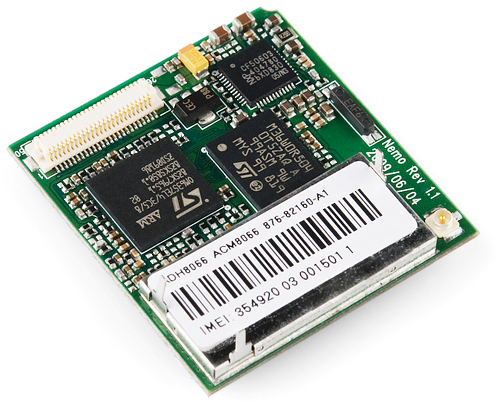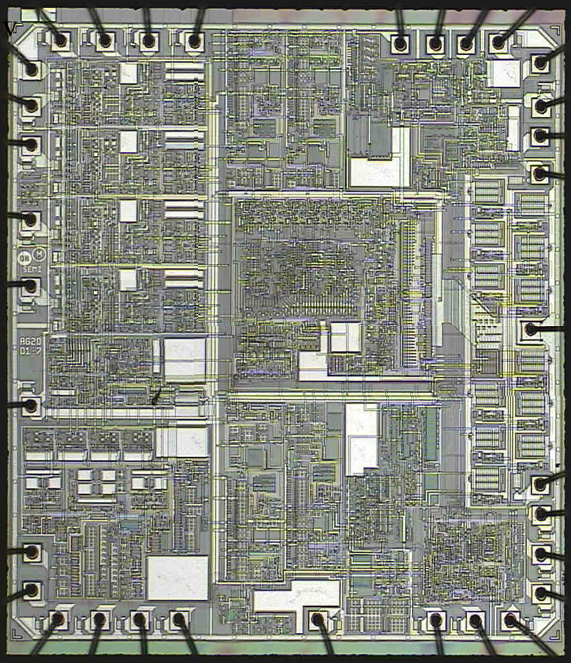Monday:
On Friday we learned a little about the early days of computing, from the abacus and Charles Babbage's analytical engine to the WW2 era Mark-I and ENIAC, and the gigantic SAGE computers built using vacuum tubes. How do you get from that to a smartphone in your pocket? The answer is the transistor, and the integrated circuit that combines millions or billions of transistors into a smallish chip. Here is a circuit board that has several chips on it -- those black square things:
(These images are from sparkfun.com . . . ) Grind the top off one of those chips and it looks like this:
Take a closer look at the little square in the middle with the tiny wires:
Zoom in:
Zoom in more with an electron microscope (not the same chip as above):
So, how do you make something like this? It's built up in many layers using a very complex technique called photolithograpy. This gives a pretty good picture:
Integrated Circuits and Moore's Law: Crash Course in Computer Science (12:40 + promo at the end)
How do they make silicon wafers and computer chips? (8:53)
50 Years of Moore's Law (2:03)
Zoom into a microchip (3:40)
So, how does all this actually work? Let me try to explain -- after the videos we'll do a video call.
Here is a copy of the slides I'll be going through (updated).
Tuesday:
Complete slides on how a CPU works, demo the Visible Computer.
Work on CodeHS Unit 7, Strings.
Work on CodeHS Unit 7. If you have completely finished all the lessons in Unit 7, you can work on the Machine Learning paper due at the beginning of class on Thursday.
Thursday:
Machine learning paper due at beginning of class, in Google Classroom and also Turnitin.
Continue to work on CodeHS Unit 7.
Friday:
Continue to work on CodeHS Unit 7. Next Tuesday will be the last class time to work on CodeHS unit 7, and there will be a progress grade for unit 7 next Tuesday evening. We will do Codingbat next Wednesday, and the unit 7 quiz will be on Thursday May 28th.




